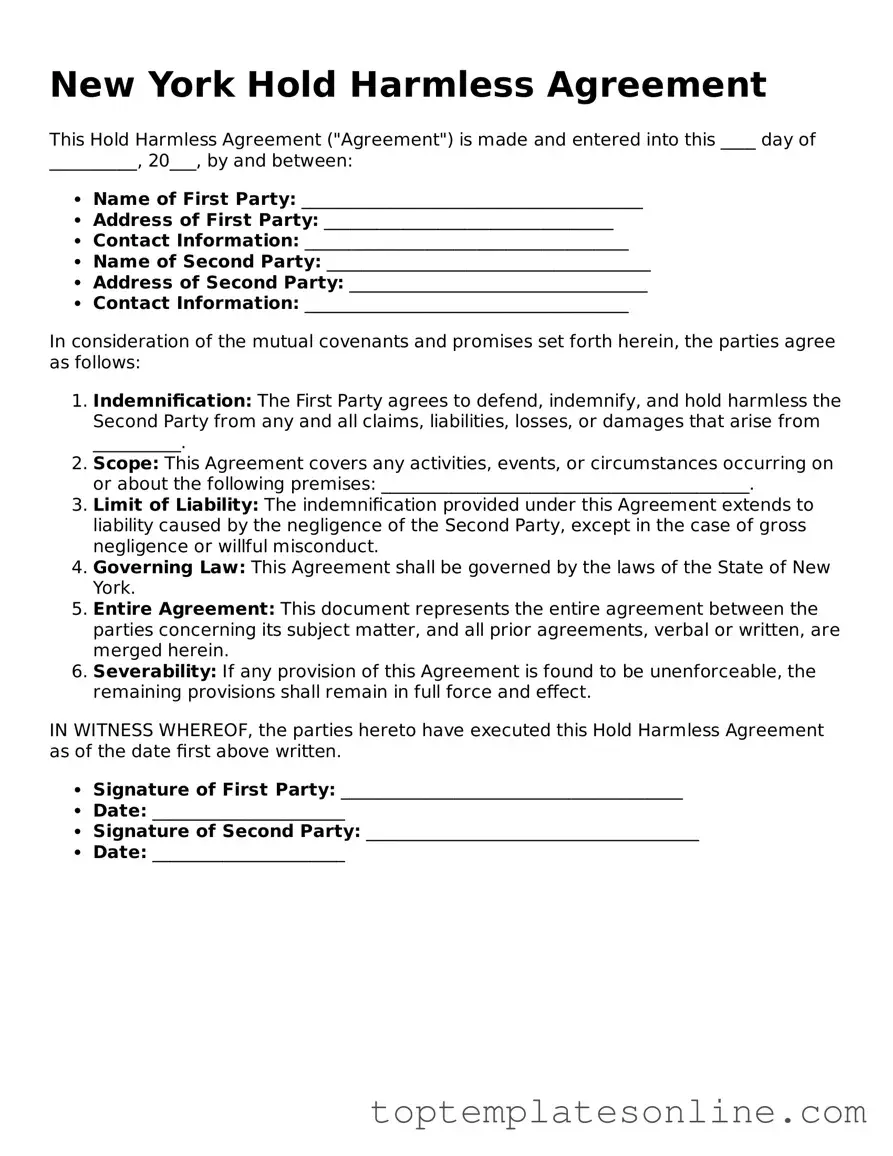Blank Hold Harmless Agreement Template for New York State
The New York Hold Harmless Agreement is a legal document designed to protect one party from liability for certain actions or events. Often used in various transactions and agreements, this form ensures that one party agrees not to hold the other responsible for potential damages or injuries. Understanding its implications is crucial for anyone engaging in contracts or agreements in New York.
Customize Hold Harmless Agreement Here
